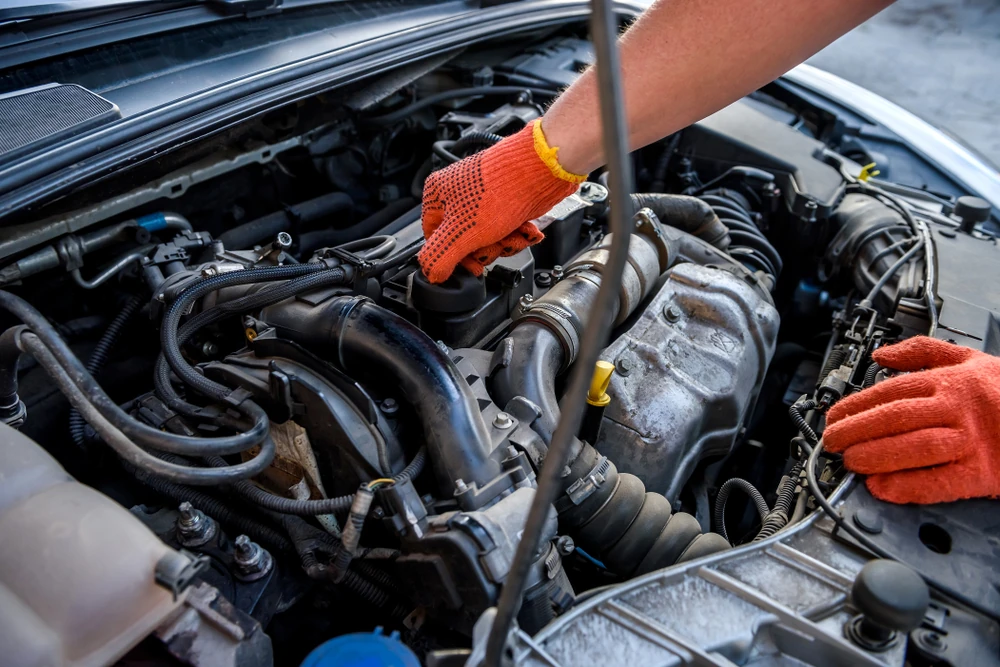How to Spot Car Problems Before They Become Costly Repairs
October 20, 2025
Ever noticed a faint rattle or vibration that seems harmless? Car problems rarely happen overnight; they build up quietly through those little changes most drivers overlook. The key to avoiding costly repairs is recognising and acting on these early signs. At Kar Pro Tyre & Auto, we’ve seen how small, unnoticed issues can quickly grow into major mechanical failures if ignored.
Your car communicates through sound, feel and performance. Listening to these cues saves money while keeping every drive safe and reliable. Let’s take a closer look at how to identify potential car issues early, giving you the power to act before they turn into high-cost repairs.

Tyres and brakes are two of the hardest-working components of your vehicle. They’re in constant contact with the road, experiencing friction, pressure and heat every time you drive. That’s why they often give the first visible or audible signs of trouble. Spotting these early cues can prevent bigger, costlier problems. This section explores how to recognise tyre- and brake-related symptoms that signal maintenance needs, along with practical tips for addressing them early.
Tyres are often your car’s first line of communication when something’s wrong, yet their signs are frequently ignored. Uneven wear patterns, irregular tread depth or constant pressure loss aren’t just signs of old tyres; they reveal how your entire suspension and alignment system are performing. They might not seem urgent, but they can reduce grip and cause handling issues, especially on wet roads. Watch out for the following signs:
Prompt tyre rotation, balancing or alignment can extend tyre life and improve comfort.
Brakes are designed to warn you before they fail completely, and they often do so audibly. That high-pitched squeal or grinding noise is your car’s way of saying, “Fix me now”. These noises can progress to metal-on-metal contact eventually, which damages your rotors and leads to expensive repairs. Pay attention to these signs:
If your car pulls to one side while braking, it likely points to uneven pressure or calliper issues. Have a professional inspect your system immediately.
Many drivers dismiss these vibrations as normal “road feel”, but persistent shaking often points to deeper balance or mechanical issues. Vibrations can come from several sources. If left unresolved, these problems can cause uneven tyre wear, premature suspension damage and a less stable driving experience. Look out for:
A quick wheel alignment or suspension check can smooth your drive and prevent costly part replacements later on.
Your engine and suspension form the heart and backbone of your car. When either begins to falter, performance, fuel efficiency and comfort all take a hit. Many drivers dismiss early signs, assuming they’ll resolve on their own. Unfortunately, these small issues often grow into serious and expensive repairs. At this stage, early detection is crucial. Here’s how to recognise and act on those first warning signals.
Every car has its unique hum and rhythm, but when that familiar sound changes, it’s your vehicle warning you that something isn’t right. These subtle signals are easy to overlook, especially at first. However, they often point to deeper mechanical issues developing beneath the surface. By understanding what these unusual noises and sensations mean, you can take swift action before they lead to costly repairs or worse, sudden breakdowns. Common indicators include:
Addressing these noises early prevents catastrophic failures like engine overheating or seized components.
Modern vehicles use onboard computers to detect even minor irregularities. When a warning light flickers on your dashboard, it’s your car’s built-in safety net, indicating that attention is needed. Whether it’s a simple “check engine” notification or a more urgent oil or battery symbol, each warning light represents a system monitoring your car’s health. Here are some warning lights to watch for:
Getting a diagnostic scan at the first sign of a light can save hundreds in future repairs.
Your car’s suspension system plays a crucial role in comfort, stability and safety. It keeps your tyres firmly on the road, absorbs shocks from uneven surfaces and ensures predictable steering. When suspension components begin to fail, your vehicle will often “feel different” before you see any visible damage. Many drivers mistake these changes as normal wear and tear, but they’re actually red flags that shouldn’t be ignored. It’s better to be mindful of the following:
Getting your suspension inspected early helps maintain proper handling and prevents damage to related systems.

Even if your car seems to be performing well, regular inspections play a role in long-term reliability. Think of them as preventive healthcare; they uncover hidden problems, ensure compliance and maintain efficiency. As experts, we’ve found that vehicles receiving consistent inspections rarely experience sudden, expensive breakdowns. Preventive maintenance gives you peace of mind knowing that every system in your car is running as it should.
Even advanced vehicles need consistent upkeep to prevent premature wear. Many drivers think that if their car feels fine, it doesn’t need servicing until a breakdown proves otherwise. The truth is, routine maintenance isn’t about fixing problems; it’s about stopping them before they start. Consistent servicing builds a history of care that protects your investment and your peace of mind. A proper schedule includes:
Staying on top of these basics ensures smooth operation and fewer mechanical surprises.
Modern cars are powered by sophisticated computer systems that constantly monitor performance, emissions and safety features. While traditional mechanical inspections are still valuable, many hidden issues today can only be detected through professional diagnostic scanning. These scans communicate directly with your car’s onboard control unit, pinpointing electrical faults and early-stage mechanical problems that would otherwise go unnoticed. Advantages of diagnostic scanning include:
Incorporating diagnostic scans into your maintenance routine enhances long-term reliability and performance.
While professional inspections are essential, there’s a lot you can do at home to keep your car in top condition. Many of the first signs of trouble can be spotted through simple observation. Regularly taking a few minutes to inspect your vehicle helps you stay familiar with what “normal” looks and sounds like, making it easier to notice when something’s off. Practical DIY checks include:
A few minutes of inspection can save hours of workshop time later.
Long-term car care comes down to consistency, planning and trust. By combining regular maintenance, record-keeping and trusted professional advice, you can reduce unexpected repair costs. Preventive care not only extends the lifespan of your vehicle but also enhances resale value and fuel efficiency.
Documenting your car’s maintenance history isn’t just for organisation; it’s a strategic tool for value preservation and warranty validation. A complete log helps mechanics diagnose issues faster and provides proof of care for future buyers. Some of the benefits include:
Keep both paper and digital records to make referencing easy.
Treat maintenance as a regular expense, not a burden. Setting aside a small monthly budget allows you to handle services and replacements without stress. Plan for these:
A consistent budget approach prevents financial strain from sudden major repairs.
Every vehicle is engineered with precision, and manufacturers design their service schedules to keep every component performing at its best. These recommendations aren’t arbitrary; they’re based on real-world testing and data analysis. Following them ensures that critical systems remain reliable for years to come.
Yet, many car owners delay or skip scheduled servicing, thinking their vehicle can “go a bit longer” without attention. While this might save time in the short term, it often leads to premature wear, decreased fuel efficiency and costly breakdowns later on. Skipping services can also void warranties or reduce resale value, which is something that’s easily avoided with proper scheduling.
The most important step in long-term vehicle care is choosing the right workshop. A trusted auto service provider gets to know your car’s history and can detect emerging issues before they become expensive. Building this relationship ensures honest advice, reliable service and consistent maintenance quality.
Cars give subtle hints long before they fail, and it’s up to drivers to listen. From unusual sounds to dashboard alerts, every sign tells a story. By recognising these warnings early, scheduling regular inspections and partnering with trusted professionals like us here at Kar Pro Tyre & Auto, you can keep your vehicle running efficiently and avoid the shock of unexpected repair costs. Stay proactive, not reactive. Your wallet and your car will thank you for it.